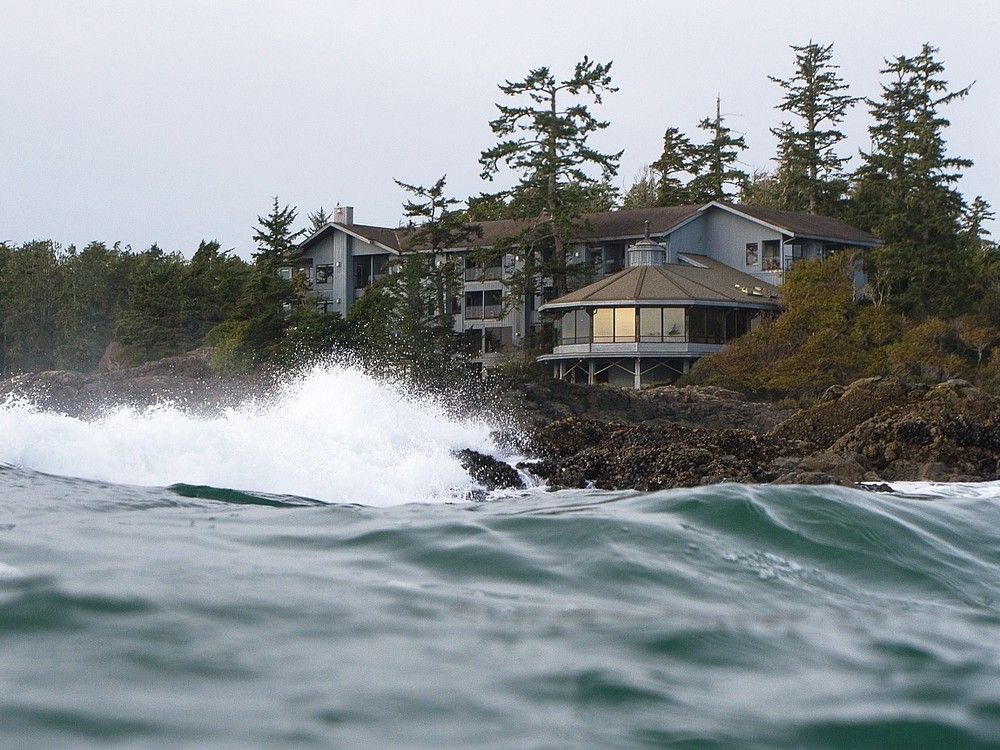
Hotelier Charles McDiarmid saw the first signs of how much business at his Wickaninnish Inn in Tofino was going to change this summer right after U.S. President Donald Trump’s inauguration, accompanied by tariff threats and warnings he wanted to make Canada the 51st state.
Inquiries from across Canada, which usually come a little later in the year, started rolling in to the property from travellers suddenly more interested in staying on this side of the border for vacation in numbers that almost rival the post-COVID-19 boom in 2022.
“It started with a bang,” McDiarmid said. “We’re tracking a very significant surge in travel within Canada with Canadians staying in Canada looking for the quintessential Canadian experience, and I believe we’re one of them.”
McDiarmid said an exchange rate with the Canadian dollar worth 72 cents to the U.S. dollar is another motivating factor for Canadians to stay home, but “the No. 1 message” his staff are hearing from customers is that “we want to support Canada,” instead of taking trips to Las Vegas, California or Oregon.
Enough Canadians are abandoning U.S. travel plans for airlines to start paring back services, which has already been evident in passenger numbers at Vancouver International Airport. YVR passenger statistics show that travel on flights to and from U.S. destinations was down six per cent to the end of March, the most recent numbers available, almost 88,000 fewer passengers, bringing the total number to 1.3 million.
WestJet on May 6 was the latest to suspend flights to nine U.S. cities including a new Vancouver to Austin route that was to start service in the second week of May but is now on hold until October.
Airline spokesman Josh Yeats said the “downward shift in transborder demand” prompted the suspensions. On the other hand, WestJet has also added new flights within Canada including a direct flight between Vancouver and Halifax to meet demand for domestic travel.
The early sign of that domestic demand showed up as a three per cent increase in domestic travel through YVR from January to the end of March, with 73,070 additional passengers bringing the total number to 2.9 million people on flights between Canadian destinations.
Travel to Asia Pacific destinations through YVR was also up 14 per cent, some 138,000 passengers for a total of 1.1 million, and nine per cent to Europe, 24,000 additional passengers for a total of 286,000.
Yeats said WestJet has also increased frequency on routes between Vancouver and Calgary, Kelowna, Prince George and Comox, as well as Comox to Edmonton.
Airline industry expert John Gradek said there will likely be more changes once summer demand shows them where they should use those planes they were using on U.S. routes.
“Within the next couple of weeks you’ll probably see more Canadian services show up,” said Gradek, a professor of supply networks and aviation at Montreal’s McGill University. “You’ll see new services from the Maritimes non-stop into Vancouver, maybe some more services from Manitoba, Saskatchewan directly into Vancouver.”
Gradek added that the big question will be whether or not B.C.’s already busy hospitality sector will be ready to absorb that surge on top of rising international visitor numbers.
“Try to get a hotel in Banff or Kelowna or Kamloops,” Gradek said. “At the peak of the summer right now is impossible.”
From Metro Vancouver’s perspective, Royce Chwin, CEO of Destination Vancouver, said the city has become practised at turning over large numbers of visitors, as evidenced by pop superstar Taylor Swift’s tour stop last December that “pushed our limits.”
“We can always use more (hotel) rooms, and we are working on that,” Chwin said. “But we feel confident enough that we’ll be able to look after most of the visitors” that arrive.
Chwin said it’s too soon to tell how much of a surge in domestic tourism the region will see, but Destination Vancouver knows that it will be coming on top of rising numbers of tourists from the U.S. Visitation from Washington state has been up nine per cent and from California eight per cent.
American tourists “really want to come to Canada, despite everything that’s going on,” Chwin said. “Their bigger concern is, ‘Will we be welcomed?’ ”
McDiarmid echoed Chwin on their typical answer that U.S. visitors are welcome.
“Our elbows are up but our arms are wide open,” McDiarmid said.
With files from Bloomberg News